Description
-
- An elegant pair of French Louis Seize ormolu mounted midnight blue glass three-light vase candelabra. The two midnight blue glass vases issuing ormolu flowering lilly branches and three arms ending with a floral candle cup. The whole standing on a square marble base.
One of the most valuable secrets of the French metalworkers of the 18th/early 19th century was gilding on brass and bronze, called ormolu. Ormolu (from French: dorure d’or molu: gilding with gold powder) is a technique for applying gold to a bronze base. In France this technique is also called bronze doré and in English it is also known as fire-gilt bronze.
Fine gold powder was mixed with mercury and then blown or brushed onto the object to be gilded. Then the object was heated strongly with fire. This caused the mercury to evaporate and the gold to settle on the bronze. This technique was very dangerous because of the mercury vapors it released, the exposure to these mercury vapors seriously affected the health of the craftsmen. Around 1830, this technique was officially banned because of the danger to the health of the craftsmen. Ormolu was applied in the 18th and early 19th centuries to the bronze mounts of important furniture, clocks and candlesticks and other high-quality decorative objects. The famous furniture makers of this period made maximum use of the most refined ormolu frames produced by leading bronze casters and carvers to enrich their precious furniture.
- An elegant pair of French Louis Seize ormolu mounted midnight blue glass three-light vase candelabra. The two midnight blue glass vases issuing ormolu flowering lilly branches and three arms ending with a floral candle cup. The whole standing on a square marble base.




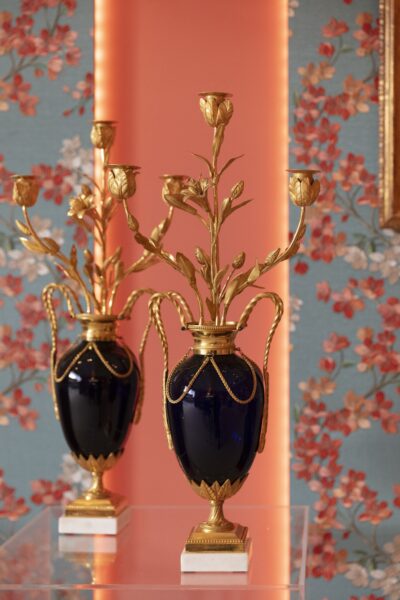
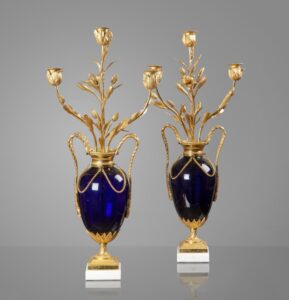

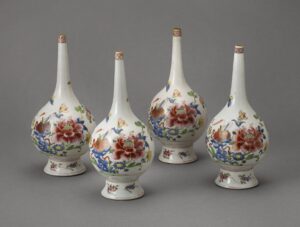

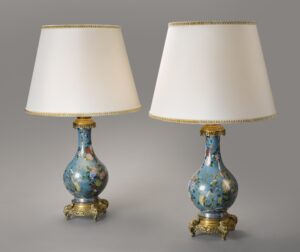
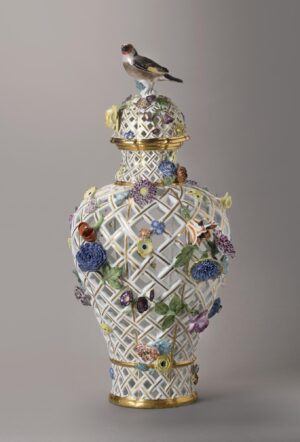
Reviews
There are no reviews yet.